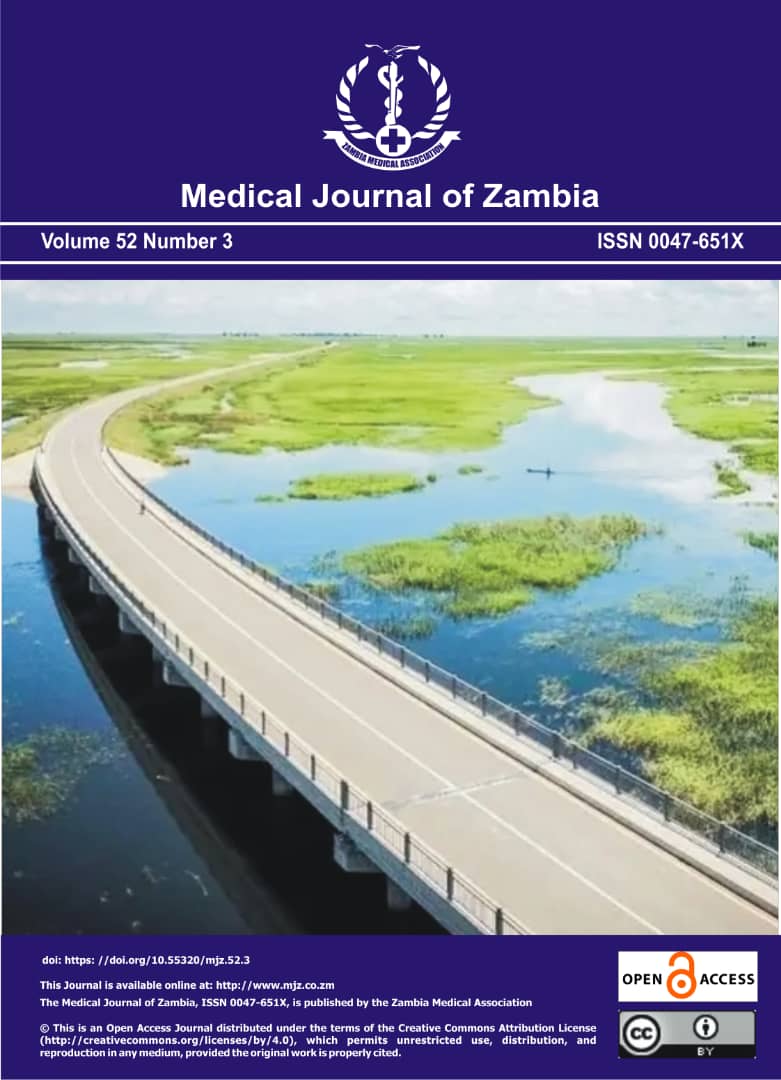Assessment of outcomes of the patients undergoing surgery for Trachomatous Trichiasis, Western Province, Zambia
DOI:
https://doi.org/10.55320/mjz.52.3.711Keywords:
Surgical Outcomes of Trachomatous TrichiasisAbstract
Background: Trachoma is the leading infectious cause of irreversible blindness globally. Trichiasis is the sight-threatening stage of trachoma and is a result of chronic inflammation in response to repeated ocular infection with Chlamydia trachomatis, which causes corneal ulceration, entropion, trichiasis and blinding corneal opacification. Trichiasis surgery can reduce the risk of blindness, although some studies have suggested that long-term recurrence rates may be high, hence the need for ongoing technical support and monitoring of surgical services.
Aim: The study aimed to assess outcomes of the patients undergoing surgery for Trachomatous Trichiasis in Western Province, Zambia
Methods: A retrospective multi-health facility-based study was conducted in September 2018 using systematic sampling technique to select patient records. All the selected records were linked to patients who were examined between three-six months post Trabut surgery. Western Province was selected for this study because it was one of the provinces with the highest burden of trachoma.
Results: The total number of participants who were selected and assessed was 74 with a mean age of 56 years. A total of 64 (86.5%) participants were female while 10 (13.5%) were males. The majority of the participants 41 (55.4%) had bilateral while 33 (44.6%) had unilateral pre-operative trichiasis. Seventy-three participants (98.6%) had no trichiasis post operatively. The following complications were observed post operatively; eyelid abnormality three eyes (4.1%), eyelid closure defect two eyes (2.7%), granuloma one eye (1.4%) and recurrent trichiasis one eye (1.4%).
Conclusion: Trachomatous trichiasis surgical outcomes using Trabut surgical technique acceptable at three to six months follow up.
Downloads
Downloads
Published
Issue
Section
License
Copyright (c) 2025 Medical Journal of Zambia

This work is licensed under a Creative Commons Attribution-NonCommercial 4.0 International License.









